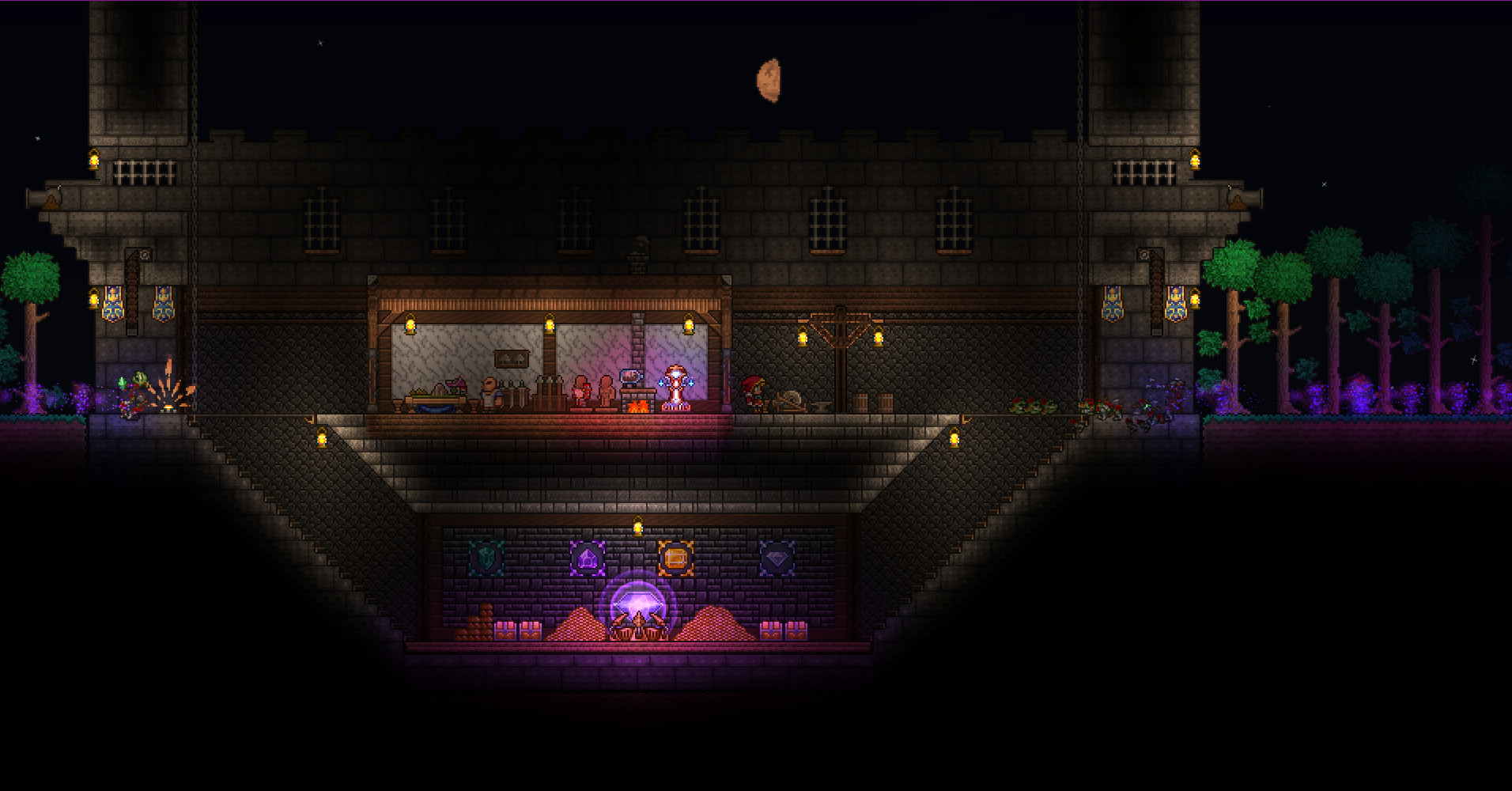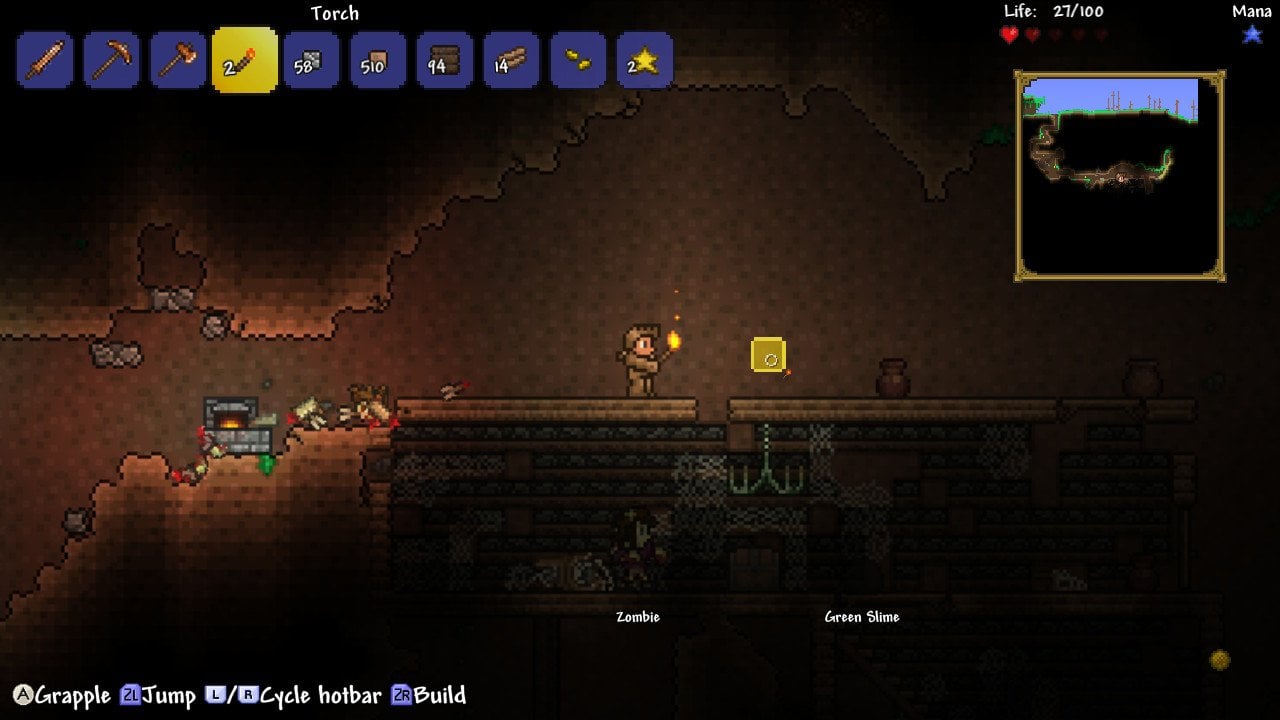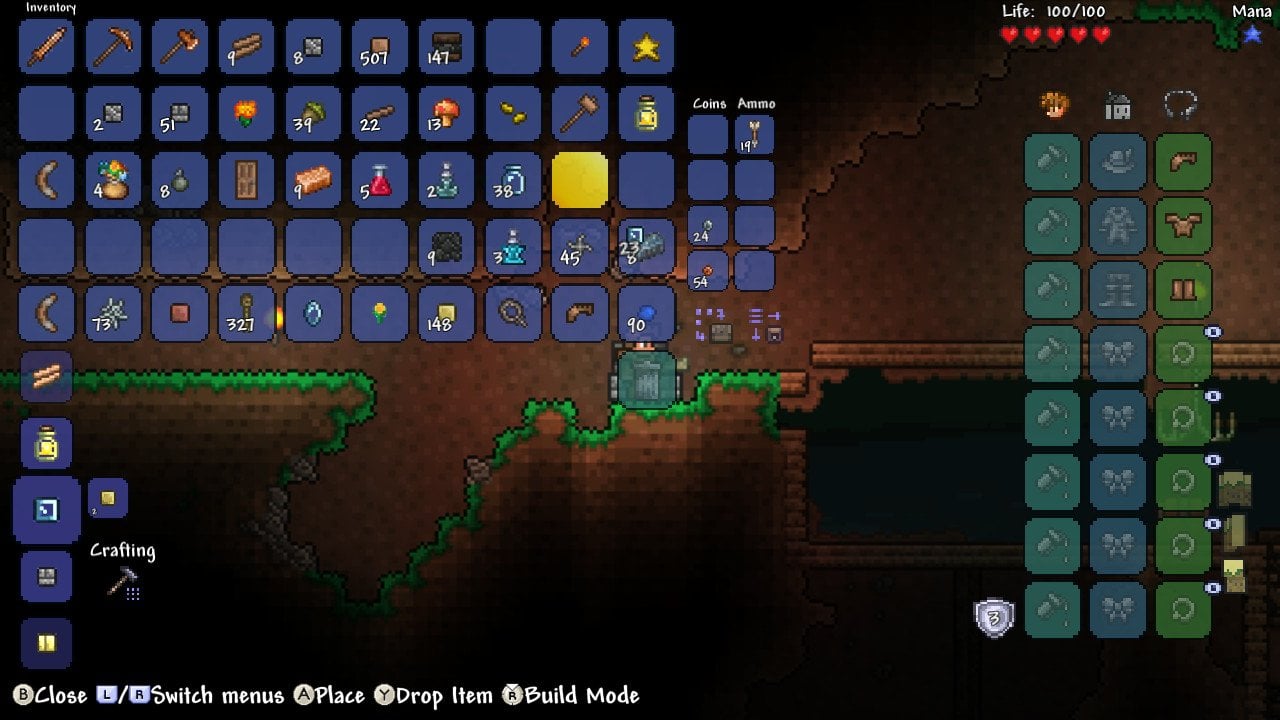It’s getting late. I think of going back to the mines in search for some more cooper and maybe some chests with items that might come handy, but Demon Eyes start slamming the walls of my house. My sword can only get me so far, and my current armor made of dirt barely adds any protection to my body. I make a run for it, digging and breaking any obstacles in the way.
I had forgotten how daunting Terraria can be at times after years since I played it on PC, but the Nintendo Switch port is making me fall in love with it again. Even if it’s demanding some patience from me when it comes to the way it controls.
Let’s start with the basics: Terraria isn’t Minecraft. That discussion has been long-had and finished.
From the ground up, it’s much more arcadey experience. It seemed limited at first with its 2D perspective, but it couldn’t be farther from reality. Digging below the ground with a handful of tools and discovering the map bit by bit is still exciting, and you never know what to expect just around the corner.
The key difference with Mojang’s sandbox is that the game encourages you to build all sorts of weapons, from a wooden sword or a shotgun to different types of grenades, even getting magic into the mix. There are companions, probably too many materials to find, forge, and build upon, and so on. It’s huge. And the developers haven’t stopped supporting it throughout the years.
I’ve always enjoyed this particular focus, which is surprising to see in a sandbox, and it has always worked well. But if you’re like me and you’ve probably already played Terraria before, you must be wondering if it’s worth it to start from scratch on a new console.
Everyone wants everything to be on Nintendo Switch, but I was skeptical about this port at first. The narrow 3D perspective of Minecraft translates well to consoles since aiming at blocks only takes a gentle movement from the camera. But when it comes to Terraria, it’s not as easy as on PC.
The left analog stick controls the player, as expected, but there’s also a pointer that follows you everywhere that can be controlled with the right stick.
This can be used on the go with only your left stick movement (if you’re mining sideways, for example) or you can also help yourself with the right stick, with moves said pointer to the direction you want to. Thing is, the sensitivity is way too high at least with the Joy-Cons, and it doesn’t feel as intuitive as it should.
In addition with this control scheme, the game has the tendency to fill up all empty spaces around what you’re aiming at, and it does it in a fast manner. Say you’re placing background blocks to form walls. If you move the pointer in a spiral while holding the right trigger, it will probably use around 20 blocks in a couple of seconds. This isn’t a huge problem when you actually want to cover up space, build yourself a bridge or block an enemy’s path fast. But if it’s a matter of precision required, it can become tedious.
Luckily there are two elements you can use to ease this. One is the possibility to zoom, something that is only available on the console versions of Terraria and is especially helpful when you’re playing on handheld mode. The other is a particular perspective that makes a grid visible around your character. This allows for a much slower building instance, which made so much easier to cover specific parts of the environment.
Since this is Nintendo’s hybrid console we’re talking about. you can also use touch controls to navigate through the game. This is naturally far easier to pick up and play with. It also showcases a zoomed-in box of the particular area you’re setting blocks in building mode, which makes it even easier to read.
For the most part, I haven’t encountered any problems with Terraria‘s performance on the console.
It runs at 720p in handheld and jumps onto 1080p in docked mode. Even there the screen got crowded with enemies and projectiles, it always maintained itself at 60 fps. One would like to take this for granted, but a bad port can ruin any game regardless of how demanding it is, so it’s a nice change of pace to just jump in and get the best experience possible.
Pros:
- An exuberant amount of content
- Intuitive touch controls
- The same Terraria experience
- Solid performance
Cons:
- Building isn’t as easy as on PC
- No exclusive content
Terraria is an entertainment experience that seems rather simple from screenshots alone but hides a lot of charm underneath with literally dozens (or hundreds!) of hours well worth your time. The Nintendo Switch version has the potential to grant it new life, both in singleplayer and multiplayer, even if the actual building isn’t as natural as one would expect.
It’s a fair trade-off from the PC version thanks to its pretty much outstanding performance, and the possibility to zoom into the action in different ways erases any kind of troubles that might come with visibility, especially when you’re holding your Switch.
Whether or not veterans would want to return to Terraria in 2019 is up for discussion, but if this could be your first time and you have a couple of friends willing to get on board for some online spelunking, then there are literally hundreds of adventures waiting for you.
[Note: A copy of Terraria for Switch was provided by 505 Games for the purpose of this review.]










Published: Jul 8, 2019 09:23 pm